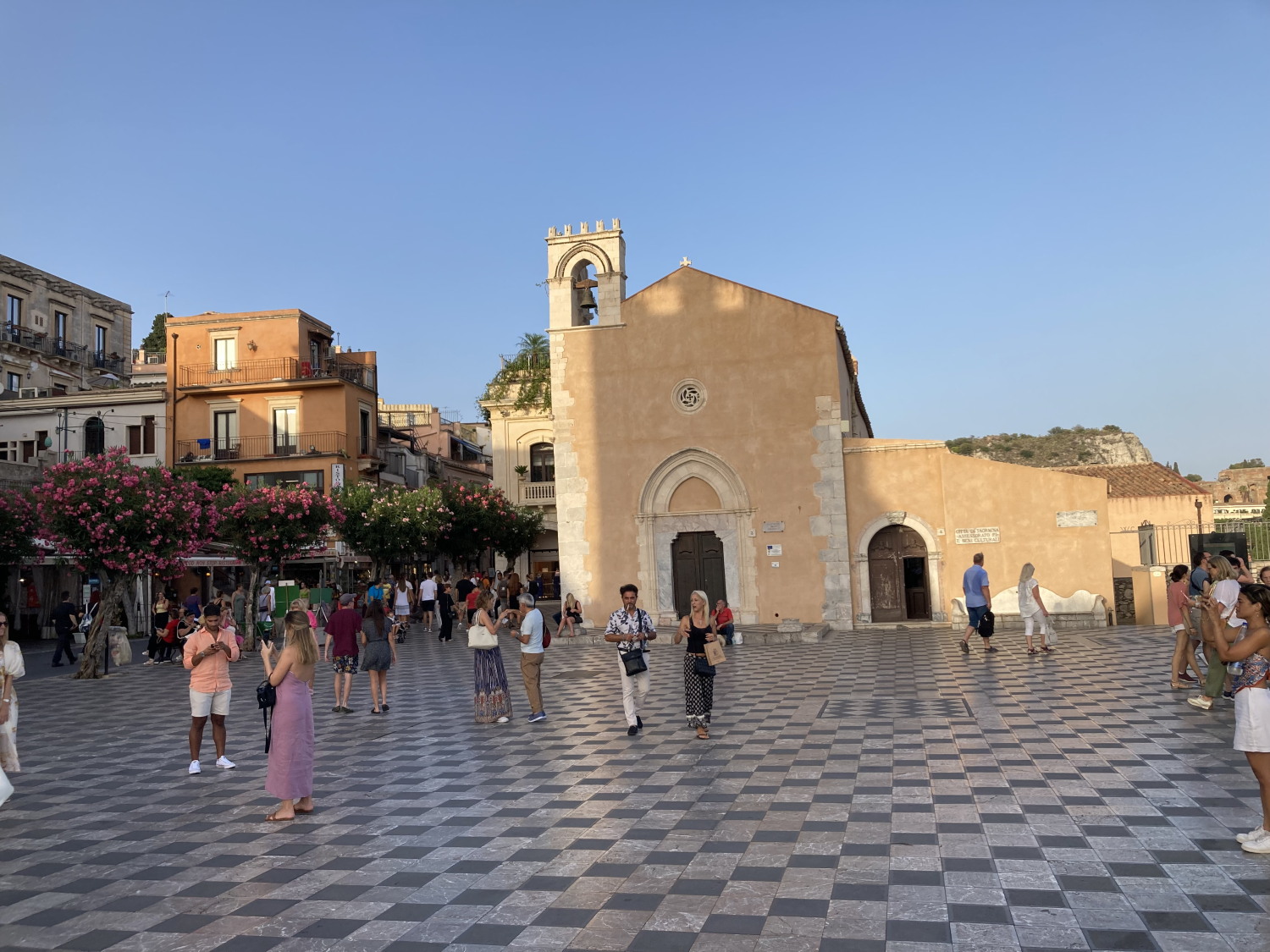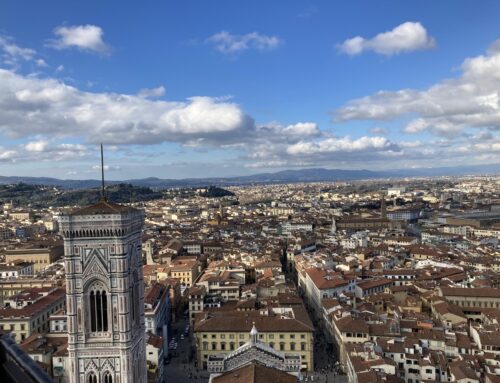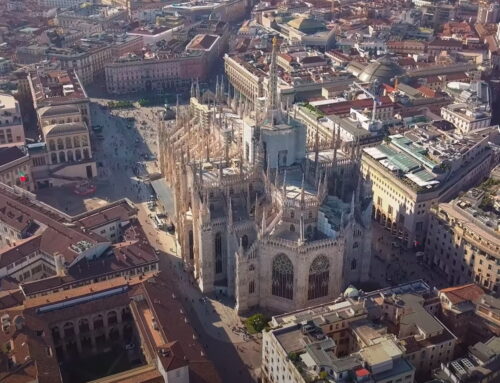Everything you need to know about
traveling to the Italian island of Sicily
Sicily is one of the most popular regions of Italy for travelers from all over the world. Given the history, culture, scenery, and food, it’s no wonder why.
We put this guide together for travelers who are ready to take the plunge and venture to Sicily.
Let’s get to it!
Sicily location and geography
Sicily is one of the twenty regions of Italy (one of five autonomous regions), and at 9,927 square miles in size, it is the largest island in the Mediterranean.
Sicily is located just west of the toe of Italy’s boot, across the Strait of Messina from the mainland.

While it is the most populated island in the Mediterranean, with about 4.8 million inhabitants, it is far from the most densely populated.
Sicily is quite mountainous, and the tops of most mountains are exposed rock, giving the landscape a rough and hard look.
Because Sicily is located on the northern edge of the African Plate, the main island and a few of the surrounding small islands have some highly active volcanoes.
The most famous of these is Mt. Etna, located at the east side of the island to the north of the city of Catania. Mt. Etna is the most active volcano in Europe, and it stands nearly 11,000 feet high.

Mt. Etna
To the north of Sicily are the three volcanic islands of Stromboli, Vulcano and Lipari. The volcanoes on Stromboli and Vulcano are still active, while Lipari has been dormant for about 1,500 years.
Sicily is bordered to the north by the Tyrrhenian Sea, the south and west by the greater Mediterranean and the east by the Ionian Sea.
There are 15 rivers that drain the island, generally through the center of the island toward the south. The longest of these is the Salso River at about 89 miles.
Sicily Climate

Sicily wildfire in 2023
The climate in Sicily is mild in the Winter and hot and dry in the Summer.
At its coolest in February, according to Weatherspark, the average high is 58 degrees and the average low is 50 degrees. This makes the climate in Sicily far more mild than in most places in mainland Italy.
During the peak heat of the Summer, which occurs in early August, the average high is 85 and the average low is 75.
In 2023, Sicily experienced higher than average temperatures in the summer, reaching over 115 degrees. Because the climate is quite dry in the summer, this led to a number of devastating wildfires.
Sicily is known as a popular beach destination in the summer months. At one of the most popular beach towns, Cefalu on the north coast, the high water temperature can exceed 80 degrees.
The water temperature in many years is still warm enough for swimming into the middle of October and even later.
As a result, mid-September to mid-October can be the most pleasant time to head to the beaches in Sicily, as they will be somewhat less crowded, particularly on weekdays.
In general, Spring and Fall are the most pleasant times to visit Sicily.
A brief history of Sicily
Because of its location in the Mediterranean See and proximity to both Africa and Europe, Sicily is one of the most conquered lands in all of the world.
As a result, the Sicilian culture is influenced by Greek, Roman, Arab and even the Normans of northwest Europe.
The first evidence of human colonization of Sicily appears about 16,000 years ago.
During the classical ancient period, there were three primary groups of people inhabiting the island; the Sicani, Elymians and the Sicels.
It is believed that the Sicani arrived from the area now known as Spain, the Elymians from the Aegean region (Greece) and the Sicels from mainland Italy.
The Phoenicians began to arrive some time around 1000 BC, followed by the Greeks a few hundred years later. The most important Greek colony was in Syracuse at the southeast corner of the island.
The Greeks then colonized much of the island and built a number of temples in Sicily. The most famous of these are located in the Valley of the Temples near Agrigento in western Sicily.

Temple of Concordia – Agrigento
Syracuse became highly desired among the Greek city-states, sparking the attempted Athenian invasion during the Pelopponesian War in 415 BC. Athens was pitted against Sparta and Corinth, who ultimately defeated the Athenians.
Sparta became the dominant power in the world of ancient Greece as a result of this victory.
During this time, the Greeks controlled the eastern part of Sicily, while the Carthaginians of North Africa controlled the west.
At some point in the 3rd century BC, the Greeks aligned with Rome. Two wars were then fought between Rome and Carthage ending with the Romans controlling Sicily by 210 BC.
Sicily remained a Roman province for the next 700 years.
Christianity first arrived to the island around 200 AD and spread rapidly after Emperor Constantine the Great lifted the ban on Christianity throughout the empire.
For a brief period after the fall of Rome, Germanic tribes ruled Sicily. This was followed by Byzantine rule beginning in the 5th century and lasting until 965.
By then, all of Sicily was under Arab rule, which lasted until the Normans conquered the island in the late 11th century.
Norman rule lasted about a century when Sicily became the Kingdom of Sicily, which lasted until 1860 when Guissepe Garibaldi captured the island. Eventually, Sicily became part of the Italian Kingdom as part of the unification of Italy in 1861.
Italy became a republic in 1946 after its defeat in World War II. As part of the Italian Constitution, Sicily was one of five regions given special status as an autonomous region.
Beginning in the early 20th century, Sicily came under the heavy influence of the Sicilian mafia.
In spite of major efforts by the Italian government, this influence remains due to mafia ties to some local governments, particularly around the capital of Palermo.
However, this influence has waned.
Notably, Sicily has been less developed the most of the Italian mainland, but major investments by the Italian government have helped the Sicilian economy over time.
As a result, the island continues to become more modernized, which is helping it become more popular among tourists and, to a small degree, expats.
What you should know before you go to Sicily
Here are some tidbits that you should know before traveling to Sicily, from the obvious to the not-so-obvious.
Currency: Euro
Language: Italian of course. While English is spoken in some of the major tourist areas such as Palermo and Taormina, it is less spoken compared to other major tourist destinations in Italy. We highly recommend that you learn some Italian before you go. Many Italians will appreciate the effort. Rosetta Stone is a popular app for learning Italian.
Visa Requirements: For stays under 90 days, you do not need a Visa, but you will need your passport.
Electricity: Europe has different electrical outlets than what we have here in the US, so you will need an adapter.
Car Rentals: The best way to get around Sicily is by car. However, driving through the cities and small towns themselves is extremely tricky. Therefore, if you do intend to rent a car, you will want to be sure your accommodations have parking on site, and are close to public transportation, or close to primary sites you want to see. You’ll need an international driver permit along with your driver’s license. If you do not have an international driver’s permit, head on over to your nearest AAA office.
For finding the best deals on rental cars, check out Discover Cars.
Flying to Sicily: There are two main airports on Sicily. The Palermo airport is actually about 35-40 minutes away by car, and is located on the west coast. The other major airport is located in Catania along the east coast. You’ll want to fly to the airport closest to where you are staying initially. Unfortunately, there are no direct flights to either city from the U.S. Check out our tips for flying to Italy.
If you don’t intend to rent a car, and need transportation to your hotel, check out Kiwi Taxis. They provide service from both airports.
The Trains: Another way to get around Sicily is by train. However, train service tends to be most available along the coasts. There are no high speed trains on Sicily, but there are intercity trains running between a few of the major cities that will get you to your destination a little more quickly.
Typically, if you are travelling a significant distance, you will end up with a mix of intercity and regional trains. While the intercity trains offer assigned seats, this is not the case with the regional trains. As a result, getting on a regional train can be a bit chaotic, and somewhat difficult with luggage.
Travel Insurance: Anytime you plan on a trip overseas, you should consider purchasing travel insurance. Travel insurance can cover the cost of medical emergencies, lost baggage, unexpected trip cancellations, etc.
Travel Insurance Master can help you find the coverage you need for your trip.
When is the best time to go to Sicily?

Teatro Antico di Taormina
Naturally, this depends upon your primary activity.
As mentioned, it can get very hot in Sicily during the summer. If your primary activity involves heading to the beach, or out on the water on a boat, then this may be fine for you.
Of course, the high season for heading to the beach in Sicily is summer, so the main beaches WILL be crowded. Therefore, you may want to look for some hidden gems. Here are our thoughts on the best beach towns in Sicily.
While it may be ok to head to the beach on a hot summer day, there won’t be too many other activities that will be very fun in high heat.
On the other hand, summer is probably a great time to visit Mt. Etna, as it won’t be too cold at the summit, which will be covered by snow in the winter.
If you want to completely avoid the crowds in most of the tourist towns, such as Taormina and Cefalu, then the winter months are an excellent time to visit. The weather will be much cooler, and you’ll be able to explore without much hassle.
Keep in mind, some businesses will close down for the winter months, as this is the time when business owners in these towns take THEIR vacations.
However, for our money, November thru March is when we would want to take a trip to Sicily to really explore the island.
Major destinations in Sicily

Teatro Massimo in Palermo
Palermo is the capital and largest city in Sicily, with a population of about 680,000 within the city limits, and about 1.3 million in the Palermo metro area. Located on the northwest coast of the island, it was founded over 2,700 years ago.
Catania is the second largest city on the island and is located on the east coast. It has a population of just over 300,000, and is home to the busiest airport on the island.
As a result of their size and proximity to the two major airports in Sicily, Palermo and Catania receive the most visitors annually. Palermo in particular has a rich history and cultural tradition.
Because of its history, Sicily is home to seven Unesco Heritage sites, including the Valley of the Temples, Aeolian islands, Villa Romana del Casale, and Mount Etna.
There are also numerous archaeological sites scattered throughout the island, including Phoenician, Greek and Roman sites. The most famous of these is the Valley of the Temples near Agrigento, one of the best examples of Classic Greek architecture.
Among the most popular secondary towns for tourists are Taormina, Syracuse, Noto and Ragusa in the east, Cefalu along the north coast, and Agrigento along the southwest coast.
Popular beach towns include Palermo (Mondello Beach), Cefalu, Castellamare del Golfo, Capo D’Orlando and San Vito Lo Capo, which is located on the peninsula that juts into the Mediterranean at the northwest corner of Sicily.
Similar to the Italian mainland, you can also find any number of small towns throughout the island worth a day trip. Erice, Scopello, Modica, Castelmola, Castiglione di Sicilia come to mind, and you can even visit Corleone to the south of Palermo.
If you are a wine enthusiast, you will definitely want to check out the wineries near Mt. Etna on the east coast and Marsala on the west coast.
This is just a brief summary of some of the places you’ll want to try and visit in Sicily.
As you can see, it’s virtually impossible to fit all these places in on one trip! We recommend a minimum of ten days to visit some of the main attractions, given the time it can take to get around the island.
Start planning now!





